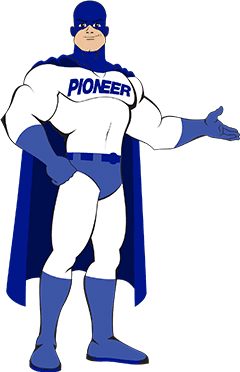When sanitary drinking water from your water utility flows out of the house instead of in backflow prevention is required. The only proper direction for potable water is always from the municipal treatment facility through the water mains and into your house. Anything that causes the water supply to reverse direction may present a health hazard by allowing outgoing wastewater and sewage to infiltrate clean drinking water.
What is Backflow
Imagine a garden hose in a bucket of insecticide gradually adding clean water to the mixture. Suddenly, something causes the flow of water to reverse. Insecticide is sucked out of the bucket, down the hose, and into the clean water supply pipe. That’s a small illustration of what’s meant by backflow. Obviously, when sewage or wastewater contaminates the drinking water, health and safety concerns are substantial. Sewage contains biohazards, as well as toxic chemicals, poisons, and heavy metals.
Plumbing systems are designed to maintain a strict separation of the potable (drinking water) stream and the sewage (wastewater) stream. However, there are some areas where these two streams exist in close proximity and potential contamination that might occur in a backflow scenario. These are known as cross-connections. Examples include washing machines, dishwashers, toilets, bathtubs, showers and even swimming pools. Many such fixtures incorporate dedicated backflow prevention devices. However, optimum safety is provided by a whole-house backflow prevention device.
These two scenarios can lead to a backflow condition:
- Back siphonage happens when water pressure in the supply system suddenly drops. This can occur due to the rupture of a major water main somewhere in the system or when there’s an unusually high demand at a particular outlet, such as during fire fighting. When this happens, supply water may reverse direction and flow out of your house, drawing possible contaminants and microbes into the drinking water supply system.
- Backpressure is the result of excess pressure in the wastewater system that exceeds the pressure in the clean water supply system. The flow of clean potable water can then be forced back across the cross-connection, allowing contaminated wastewater to enter the clean water system.
Ensure Safe Drinking Water for Your Family
Here are some steps a homeowner can take to reduce the health threat to the municipal water supply from backflow:
- Eliminate any avoidable cross-connections between clean water and wastewater. Don’t submerge hoses in wastewater or chemicals.
- Install dedicated vacuum breakers on the hose bibbs of fixtures such as washing machines.
- Make sure your home’s lawn sprinkler system has an approved backflow prevention device installed.
- Have a professional plumber install an approved backflow prevention device at your home’s water meter. The device should be approved for residential usage and testable to regularly verify proper operation.
We Can Prevent Water Contamination
Backflow protection comes in several varieties, ranging from simple air gap and vacuum breakers to more complex double valve mechanisms. The choice of the appropriate device will be influenced by the setting as well as the potential danger and health hazard in that location from possible backflow.
- Air gap –This is non-mechanical protection. It’s not a device with moving parts but simply a physical separation between the clean water supply and contaminated wastewater. The air gap is probably the oldest method for separating the two streams of water.
- Barometric loop – Another non-mechanical method, the barometric loop incorporates a continuous span of a supply water line that rises sharply to a height of at least 35 feet and then returns to level. This method containing no mechanism or moving parts effectively protects against back siphonage but not backpressure.
- Anti-siphon vacuum breaker – This uncomplicated device is installed in many homes. It’s simply a valve that automatically senses a vacuum in the water supply line and opens to admit air into the pipe. This disrupts the force of vacuum that might suck wastewater into the potable water supply pipe. It’s effective against back siphoning but not backpressure.
- Double-check valve – This mechanical device consists of two independent water valves at opposite ends of the unit, along with four test outlets. In normal operation, the valves remain closed until a household demand for water causes them to automatically open. Should a backflow condition occur, both valves will automatically close to stop the reversal of supply water and prevent both back siphonage and backpressure. Double-check valve backflow prevention devices are fully testable.
Homeowners require professional advice and skilled expertise to add an effective backflow prevention device to their water supply system. Contact the professionals at Pioneer Comfort Systems for more information.

